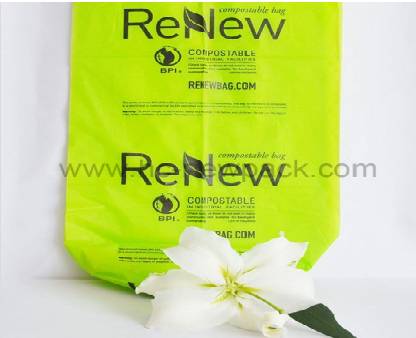Key Words: Biodegradable Bag, Garbage Bag, T-shirt Bag, Food Bags
The actions of "restricting or stopping the use of plastic bags and other disposable plastic products such as straws" initiated by Western European countries will further promote the market demand for biodegradable plastics. Will biodegradable plastics dominate the future?
The analysis of IHS Markit, a world-renowned consulting company, pointed out that the "restriction or cessation of use of plastic bags and other disposable plastic products such as straws" initiated by Western European countries will further promote the market demand for biodegradable plastics.
The global market for biodegradable plastics exceeded US $ 1.1 billion in 2018. IHS Markit predicts that by 2023, the global market for biodegradable plastics is expected to reach US $ 1.7 billion.
In 2018, the global demand for biodegradable polymers was 360,000 metric tons, but IHS predicts that by 2023, the global consumption of biodegradable polymers may increase by more than 50% to 550,000 metric tons, which means that from 2018 to During the five years in 2023, the annual average growth rate of global biodegradable polymer consumption can reach 9%.

Biodegradable Bag
Biodegradable Compostable Bag Supplier says: Biodegradable or compostable polymers refer to bio-based or fossil-fuel-based polymers that can be decomposed into carbon dioxide and water by microorganisms in industrial or municipal composting bases. Even some polymers can be biodegraded directly in the backyard compost bins of individual homes and in soil, freshwater or saltwater environments.
Food packaging, disposable tableware (including cups, plates, knives and forks, etc.) and Biodegradable Bag is the largest end-user market for biodegradable goods and the most important growth engine. These areas will benefit from the “plastic restriction order” or “plastic prohibition order” of government departments in various countries and regions, and is expected to achieve double-digit growth.
Compostable Bag is the second most important end market for biodegradable polymers. This market will grow strongly with the expansion of composting facilities and the growing interest in organic waste such as leaves, grass clippings, and food waste in landfills.
Foam packaging, including starch-based loose filler packaging (such as nut packaging), is an important end-user of biodegradable polymers in Western Europe and North America. Plastic film and other agricultural applications are important end-users of biodegradable polymers in Western Europe and Asia.
Small-volume markets include paper coatings for cups and cartons, woven and non-woven fabrics, and absorbable medical devices such as sutures and implants, downhole tools for oil and gas and gas fields, and 3D printing brushing, etc. It is where biodegradable polymers come in.